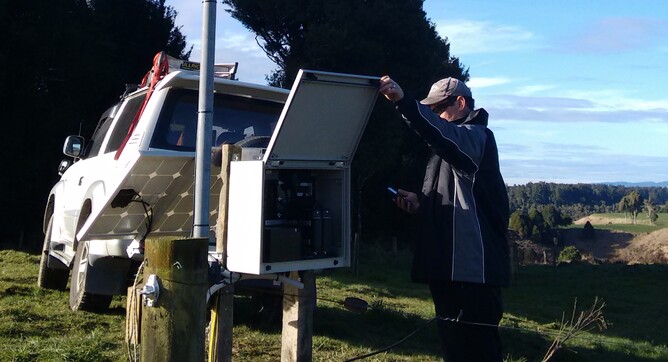Repeaters can be an incredibly useful part of your two way radio set-up, however many people don't understand what they are or how they can help improve the way you communicate.
Most two way radios work with a line of sight, which is an imaginary line between each transmitting radio. Radio waves can travel through many non-metallic solid objects along this imaginary line, such as walls, furniture, and even human bodies. However, each time they pass through something, their strength decreases, and denser materials weaken the signal more. As radio waves pass through more objects, their range gets shorter. While radio waves will pass through non-metallic objects, they won’t pass through metal, or hills/mountains.
So what is a repeater, and how does it work?
A radio repeater is a device used in telecommunications to extend the range and coverage of radio signals. It operates by receiving radio signals on one frequency and re-transmitting them on another frequency, typically at a higher power level. This process enables communication over longer distances and across obstacles that would otherwise obstruct direct transmission.
Here's a breakdown of how a radio repeater works:
Reception: The repeater station first receives radio signals from transmitting stations within its range. These signals may be weakened or distorted due to factors like distance, terrain, or interference.
Amplification: The received signals are then amplified to compensate for any signal loss that occurred during transmission. Amplification boosts the signal strength to ensure clarity and reliability.
Decoding and Filtering: In some cases, the repeater may decode and filter the received signals to remove noise or interference, ensuring that only clear signals are re-transmitted.
Re-transmission: After amplification and processing, the signals are re-transmitted at a higher power and/or on a different frequency. This enables the signals to travel farther and penetrate obstacles, effectively extending the communication range.
Antenna: The repeater station is equipped with antennas designed to efficiently transmit the re-transmitted signals over a wide area, ensuring comprehensive coverage.
By strategically placing repeater stations in locations with optimal coverage, telecommunications networks can provide reliable communication over large geographic areas, including remote or challenging terrains. Repeaters are widely used in various applications, including public safety, emergency response, broadcasting, and wireless communication networks. They play a crucial role in overcoming the limitations of radio communication, ensuring seamless connectivity for users across diverse environments.
While repeaters can be expensive at times, our team at Mobicomm have developed a custom farm repeater which can be adapted perfectly to your pre-existing communication setup, operating on either a digital or analogue system, as well as through either UHF or VHF. In addition, this repeater can be run off of either solar or mains power, meaning it will always be active when you need it, never leaving you without the extended communication range that your farm or worksite may need.
If you want to find out more or upgrade your communication system today, call us at 0800 947 426!


